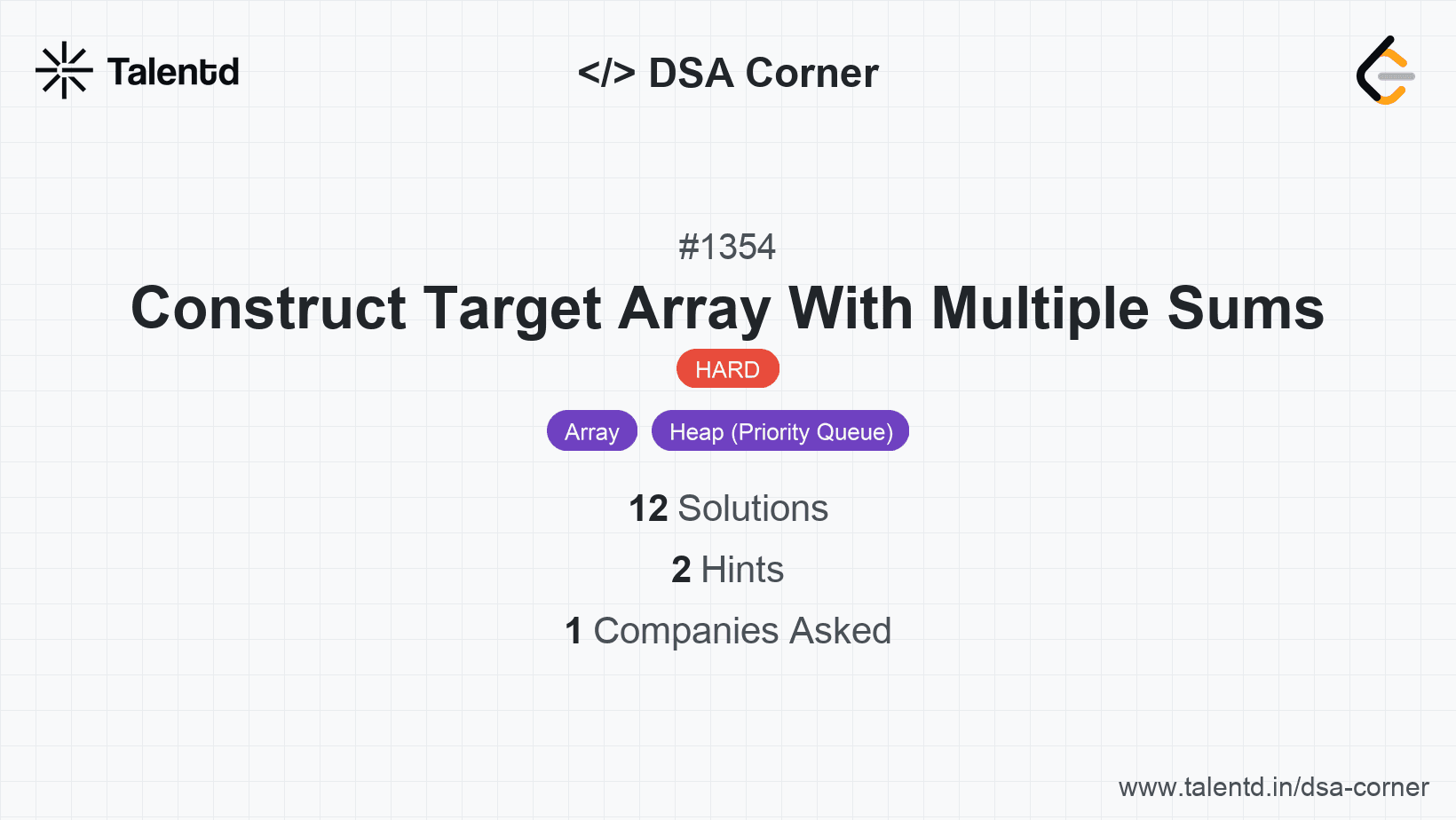
Sponsored
Sponsored
This approach uses a max-heap (priority queue) to efficiently track and operate on the largest element. The primary idea is to reverse the operation: starting from the target array, every large element in the target can be seen as the result of adding all smaller elements in the array to one of the array's elements during the last operation. By repeatedly transforming the largest element in this manner, we can verify if it is possible to reach the initial array of ones.
The time complexity is O(n log n * log maxValue) due to sorting and heap operations, where n is the number of elements and maxValue is the maximum integer in the target. The space complexity is O(1) since we are sorting and using in-place operations optimistically.
1#include <iostream>
2#include <vector>
3#include <queue>
4
5bool isPossible(std::vector<int>& target) {
6 long total = 0;
7 std::priority_queue<int> pq;
8 for(int num : target) {
9 total += num;
10 pq.push(num);
11 }
12
13 while(pq.top() != 1) {
int largest = pq.top(); pq.pop();
total -= largest;
if(total == 1 || largest % total == 0) return false;
largest %= total;
total += largest;
pq.push(largest);
}
return true;
}
int main() {
std::vector<int> target = {9, 3, 5};
std::cout << (isPossible(target) ? "true" : "false") << std::endl;
return 0;
}This C++ solution uses the priority queue data structure to efficiently keep track of and modify the largest element in the target array. It calculates the total sum of the array, then repeatedly reduces the largest element by the sum of the rest of the array until the array consists entirely of ones or the operation becomes impossible.
This approach utilizes a sort and modulo method to reverse-track the process involved in constructing the target array from an array containing ones. It revolves around repeatedly reducing the maximum value to the remainder after division with the sum of other elements.
Steps include:
Time complexity is O(n log n * log maxValue); space complexity is O(1) when using in-place operations for sorting and arithmetic.
1using System;
2using System.Linq;
3
4class Solution {
5 public bool IsPossible(int[] target) {
6 long sum = target.Sum();
7 Array.Sort(target, (a, b) => b.CompareTo(a));
8
9 while (target[0] != 1) {
10 int largest = target[0];
11 long rest = sum - largest;
12
13 if (rest == 0 || largest <= rest) return false;
14
15 int newValue = (int) (largest % rest);
16 if (newValue == 0) return false;
17
18 target[0] = newValue;
19 sum = sum - largest + newValue;
20 Array.Sort(target, (a, b) => b.CompareTo(a));
21 }
22 return true;
23 }
24
25 static void Main() {
26 int[] target = {8, 5};
27 Console.WriteLine(new Solution().IsPossible(target) ? "true" : "false");
28 }
29}This C# solution employs arrays to continuously inspect and modify the largest element while sorting, examining whether it's feasible to reach the boarding array condition through maintaining exact operations as suggested by reversed transformations quantum.